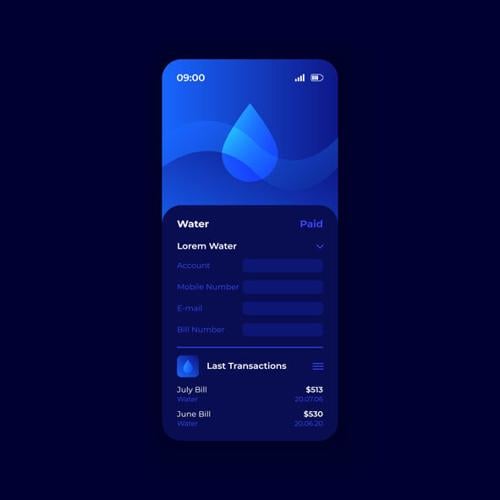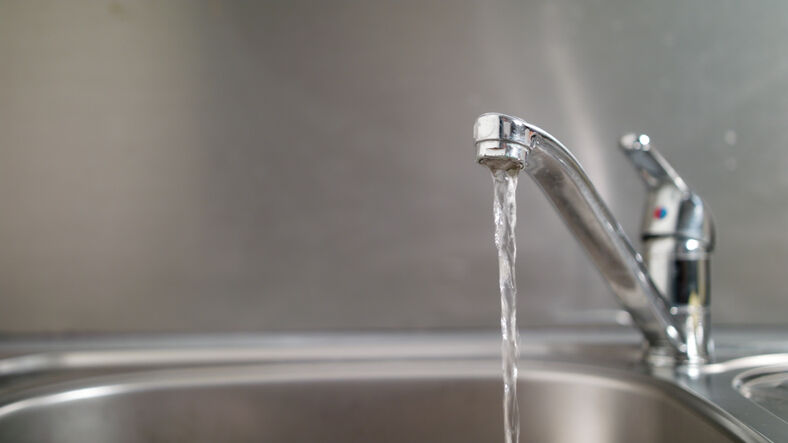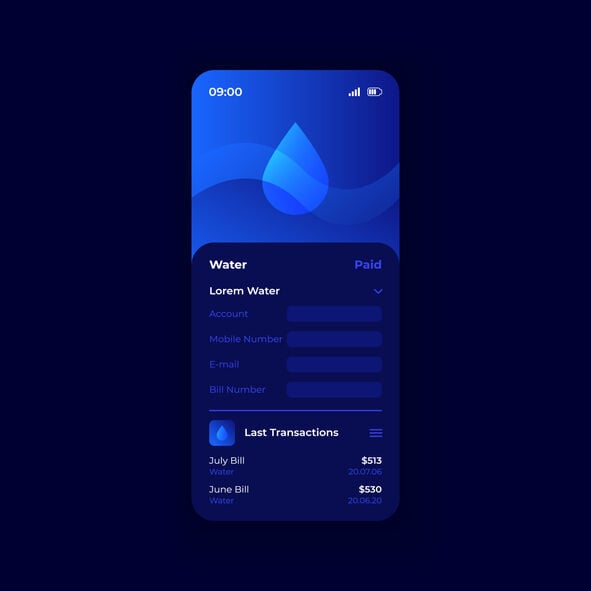In June, a top Tucson Water official said the biggest challenge in getting low-income people to sign up for $3,000 to pay toward their water bills “is to have them believe it’s real.”
Turned out, for 1,000 Tucson families, it wasn’t real.
The federally financed, state-run program was designed to pay $3,000 per household to families with poverty-level incomes, both as a credit for past unpaid water and sewer bills or to be applied to future bills.
For many families struggling to juggle rent, food and utility expenses every month, that much money would have allowed them to avoid paying water and sewer bills for six years or more.
Tucson Water was verbally offered a crack at $10 million in federal funds for this program in May, although the money wasn’t formally committed.
The state Department of Economic Security conditioned the offer on the availability of funds, its spokeswoman is emphasizing, but Tucson Water officials say they felt reasonably confident of getting all $10 million.
The state had nearly $15 million available for the program back in May, and faced a federal deadline of Sept. 30 to spend it all or return what was unspent.
But as it turned out, the money didn’t even last until August.
Requests for the money from low-income households statewide poured in far faster than expected, DES says now. So all $14.9 million of available funding was gone after Tucson Water had managed to get only 1,800 to 1,900 families enrolled and only $5.49 million committed from the state for credits on their utility bills.
Originally, Tucson Water hoped to get enough money for 3,000 families, at least, said Silvia Amparano, the utility’s deputy director.

People “really need the help”
The water-bill savings for the up to 1,900 families who will get the $3,000 will vary, depending on how close or far their incomes are to federal poverty levels.
A family of four earning 125% of the poverty level income of $37,500, for instance, gets a 50% discount on its water and sewer bills. With that discount, the average, total utility bill for a customer at that income level is $40.49 a month, Tucson Water says.
At that rate, the $3,000 would last a family about 74 months, or a little more than six years.
Now, Tucson Water officials and some City Council members and members of their Citizens Water Advisory Committee say they hope DES can find more money somewhere to pay for the remaining families.
“These funds could make a big difference for a lot of families in Tucson. I really hope the state makes us whole,” said City Council member Kevin Dahl. “People who really need the help were expecting it.”
For now, however, all DES spokeswoman Tasya Peterson can say is that the agency will cover the past-due debt on water bills owed by 230 additional Tucson households that the utility identified as being at risk of having their water service disconnected.
In addition, DES has requested information on the remaining individuals whom Tucson Water had been in contact with, “to determine (our) capacity to provide a reduced benefit to ensure water services continue,” said Peterson, DES’ press secretary.
But how did the state burn through nearly $15 million in federal funds in barely three months?
Pandemic-related program
What’s called the Low Income Household Water Assistance Program was created in a huge congressional appropriations bill, enacted in late 2020 for COVID-19 pandemic relief programs, during the waning weeks of the Trump administration.
Its purpose, says DES, was to insure that eligible households maintained access to safe drinking water and wastewater services during the pandemic. Arizona received $23.9 million to run the program — money that must revert to the feds if unspent by the end of this month. The state started operating the program in October 2021.
In the program’s first year, DES only spent $1.3 million on benefits to water customers. One reason is that many eligible households had sought and received help from other, “more robust” federal programs that provided money for housing and utility bill payment assistance, DES spokeswoman Peterson said.
In October 2022, the state reached out to numerous public water utilities to participate because they could directly connect with water users. Tucson Water was the only utility that expressed interest and could also meet federal requirements for participating, she said.
On May 30, Tucson Water and DES signed an agreement for the state to provide such funding to the city.
But that agreement not only didn’t promise a specific dollar amount, it contained a provision saying:
“... every payment obligation of the State under the agreement is conditioned upon the availability of funds appropriated or allocated for payment of such obligation. If funds are not allocated and available for the continuance of this agreement, this agreement may be terminated by the state at the end of the period for which funds are available.”
At that time, both DES and Tucson Water officials felt confident the full $10 million would or at least might be available for low-income Tucson customers, their officials told the Star.
One reason is that in May, with $14.9 million available for the program, the state projected that by the end of September, DES would still have $10 million left unspent without Tucson Water’s participation.
But then the situation turned around radically.
Who was eligible
First, the state stopped giving money from another one of its programs, aimed at providing financial assistance to renters, to help them pay utility bills. Participants in that program were encouraged to apply for money from the water assistance program through a web portal set up for that purpose.
Second, Tucson Water began a complex, detailed process of soliciting low-income applicants for the money. Families of four earning less than 150% of federal poverty-level incomes — or about $45,000 a year — were eligible. But to actually receive the $3,000 payments, they had to go through a rigorous screening.
“The targeted outreach included reaching out with postcards, letters, multiple phone calls and we sent out emails that had videos in English and Spanish,” said Natalie DeRoock, the utility’s spokeswoman. “We had an extraordinary, one time opportunity, and we tried to do our best to inform our customers and engage them.”
At a June 7 meeting of Tucson’s Citizens Water Advisory Committee, Amparano, the utility’s deputy director, said Tucson Water had a plan to reach out to eligible customers every few weeks, and would work closely with customer service groups to see “what’s working or not working.” The utility has a list of eligible customers, and “if they don’t call us, we will call them. Our biggest challenge is to have them believe it’s real,” she said.
“The last thing we wanted was for the money to go unused,” Amparano told the Star last week. “We wanted to make sure all of our low- income customers were aware the money was available.”
At the same time, “We let them know it wasn’t guaranteed, that they had to go through an Arizona DES process” to get finally approved, she said.
Increase in demand surprised officials
In June, Tucson Water only submitted 350 to 381 requests for money to DES, based on different estimates from the two agencies. In July, the state agency got about 1,476 requests from Tucson.
At the same time, applications from other low-income families via DES’ separate web portal were skyrocketing every month from May through July. The 2,158 applications in July exceeded year-earlier totals by 61%. On Aug. 7, when DES announced funding was exhausted, it had awarded payments of up to $3,000 to 7,158 households through the portal.
DES’ Peterson also noted that Tucson Water’s June survey results indicated that it would not spend the entire $10 million allotment. Therefore, the department continued to process applications on a first-come, first-served basis until funding was exhausted on Aug. 7.
She added that the utility assistance program is not an entitlement program and completing a survey issued by Tucson Water did not automatically enroll or guarantee benefits for the household. Eligibility was always subject to the review of a DES eligibility specialist and the availability of funding, as was the case for all households across Arizona seeking the help.
DES officials hadn’t expected the demand to increase that fast, based on the light use of the program before, Peterson said. But it turned out that other government utility assistance programs had joined the rental assistance program in curtailing payments, driving more households to the DES water assistance program, she said.
Finally, July’s extreme heat wave prompted DES to issue a news release promoting the program, “which could also have contributed to the demand.”
“Responsibility just keeps getting passed along”
A member of Tucson’s Citizens Water Advisory Committee, Roxanna Valenzuela, said Tucson Water should have done more to get more low-income customers enrolled in the program sooner.
“Their excuse is that they are understaffed, that they haven’t been able to put the word out there to get money to the people who need it the most,” said Valenzuela, who is also a community organizer for Casa Maria, a nonprofit organization that runs a soup kitchen and advocates for homeless and other low-income families.
“There needs to be more engagement with this community under the poverty line so they know what is available,” Valenzuela said. “A staffing shortage shouldn’t be an excuse. It leaves an organization like ours covering the utility bills for people instead of the money going into other things. The responsibility just keeps getting passed along.”
Amparano said at the June advisory committee meeting that “we were 20 positions down in our call center.” But utility spokeswoman DeRoock said Tucson Water went “above and beyond and did our best to work in partnership with the state and make sure our customers felt supported, knowledgeable and well informed.
“We did outreach through multiple channels and we helped customers access the state application,” DeRoock said.
Other Tucson-based officials and activists fingered the responsibility for the money shortfall on the state. Advisory committee member Ed Hendel and City Council members Dahl and Steve Kozachik said it’s now incumbent on the state to make “whole” all Tucson Water customers who signed up for funding this month but still haven’t been assured of getting it.
“Per their instructions, we sent letters to people. We have people standing in line waiting for this credit on utility bills. It’s incumbent on the state to come up with the money we have committed to people,” Kozachik said. “The DES said ‘we’ve got $10 million we will spread around for helping people make water payments’. Then they opened up another portal and siphoned off some of that money. They have an obligation to honor those conversations they had with city staff.”
While DES has agreed to try to find more money for Tucson Water customers, Peterson told the Star the $10 million was a “budget ceiling.” The department is trying to find money to eliminate past-due balances for about 800 Tucson Water customers, including the 230 who risk having service disconnected, she said. Giving $3,000 to all eligible Tucson households “would require additional federal investment,” she said.
“Unfortunately, the demand for water assistance surpassed the available federal funding,” Peterson said, adding: “However, due to the partnership with Tucson Water, Pima County residents received critical LIHWAP assistance ... in paying their water bills during the unprecedented heat wave.”
Get your morning recap of today's local news and read the full stories here: http://tucne.ws/morning






